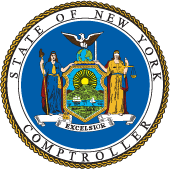Audit Objective
Did Avoca Central School District (District) officials make procurements in accordance with statutory requirements and District policies?
Audit Period
July 1, 2022 – February 20, 2025
Understanding the Program
Generally, school district (district) purchases should be made in the best interest of the taxpayers. One method for ensuring that goods and services are acquired in a cost-effective manner is to create as much competition as possible. Whether using formal competitive bids in accordance with New York State General Municipal Law (GML), requests for proposals (RFPs) or written and verbal quotes, a well-planned solicitation effort is important to reach as many qualified vendors as possible.
The District made purchases from 31 vendors, totaling $3.5 million, subject to the competitive bidding requirements set forth in GML. Additionally, the District made purchases from 608 vendors, totaling $1.2 million, which were not subject to the competitive bidding requirements and purchases from 10 vendors, totaling $965,535, for professional services.
Audit Summary
District officials did not always procure goods and services in accordance with the statutory requirements set forth in GML or with the District’s procurement policies and procedures. When officials do not solicit competition during the procurement of goods and services, taxpayers have less assurance that purchases are made in the most prudent and economical manner and without favoritism.
District officials also did not develop procedures governing the procurement of goods and services not subject to New York State competitive bidding laws as required by the District’s procurement policy that was last approved by the Board in 2017. In addition, District officials did not aggregate purchases to determine whether certain procurements were subject to the competitive bidding set forth in GML. As a result, District officials did not always seek competition and:
- Issue RFPs for payments to seven of the 10 professional service providers totaling $362,740 (38 percent) of the $965,535 reviewed,
- Competitively bid, in accordance with GML for cleaning supplies which, when aggregated, totaled $22,930, and
- Ensure that 42 of 54 purchases, totaling $38,446 (59 percent) of $65,287 reviewed, which were not subject to the competitive bidding requirements of GML, were still properly procured in a competitive manner.
Furthermore, officials did not ensure that purchases made using the “piggybacking”1 exception totaling $817,099 adhered to the competitive bidding exception set forth in GML Section 103(16).
The report includes five recommendations that, if implemented, will improve the District’s procurement function. District officials generally agreed with our findings and indicated they plan to initiate corrective action. Appendix C includes our comment on an issue raised in the District’s response.
We conducted this audit pursuant to Article V, Section 1 of the State Constitution and the State Comptroller’s authority as set forth in Article 3 of the New York State General Municipal Law. Our methodology and standards are included in Appendix D.
The Board of Education (Board) has the responsibility to initiate corrective action. A written corrective action plan (CAP) that addresses the findings and recommendations in this report must be prepared and provided to our office within 90 days, pursuant to Section 35 of the New York State General Municipal Law, Section 2116-a (3)(c) of the New York State Education Law and Section 170.12 of the Regulations of the Commissioner of Education. To the extent practicable, implementation of the CAP must begin by the end of the next fiscal year. For more information on preparing and filing your CAP, please refer to our brochure, Responding to an OSC Audit Report, which you received with the draft audit report. The CAP should be posted on the District’s website for public review.
1 The piggybacking exception allows a district to benefit from the competitive process already undertaken by other local governments (see Appendix A for further details).
